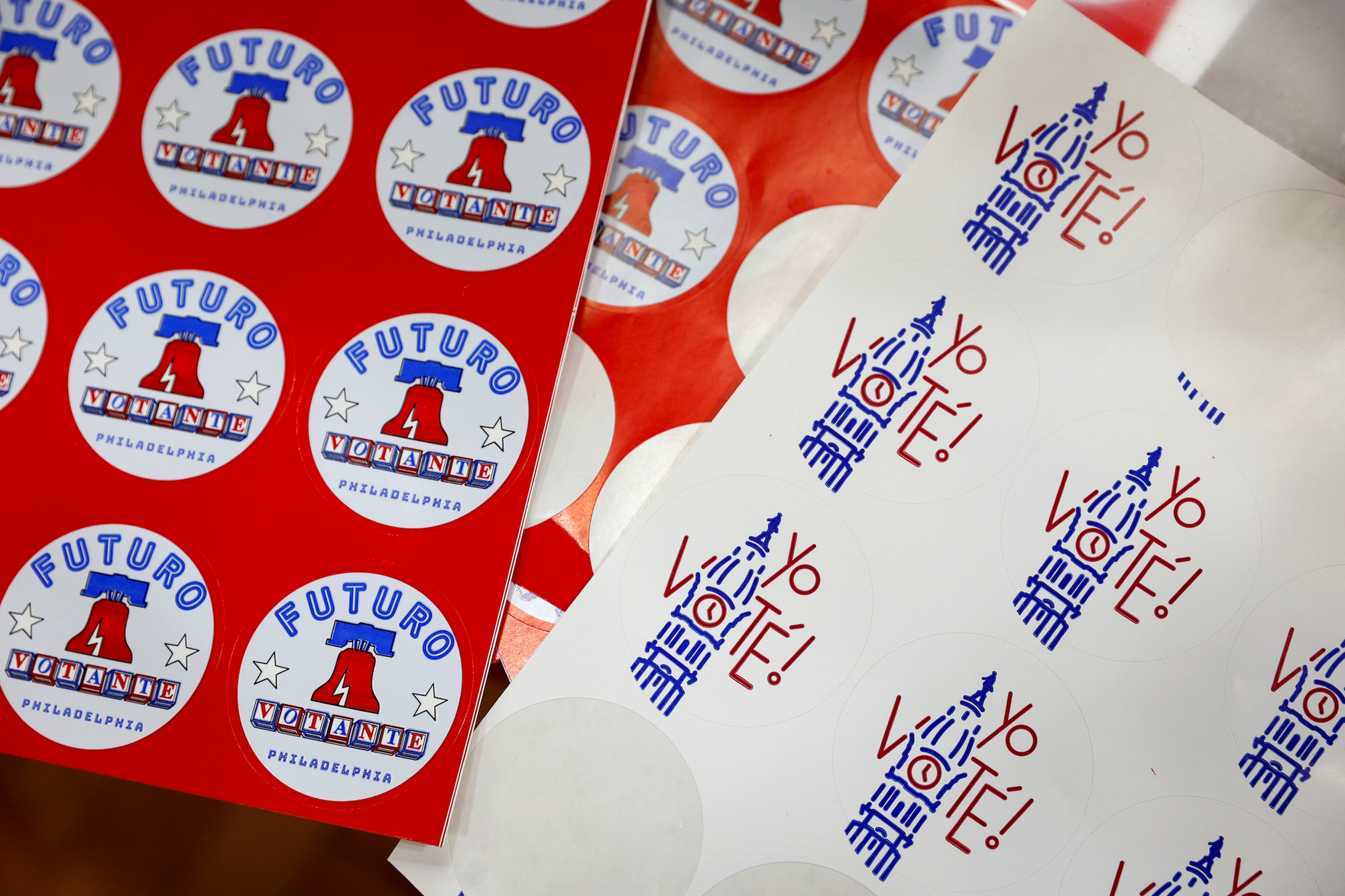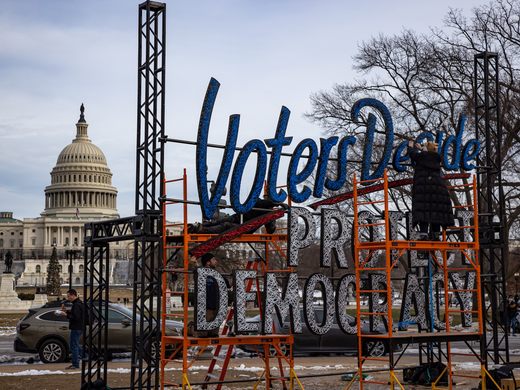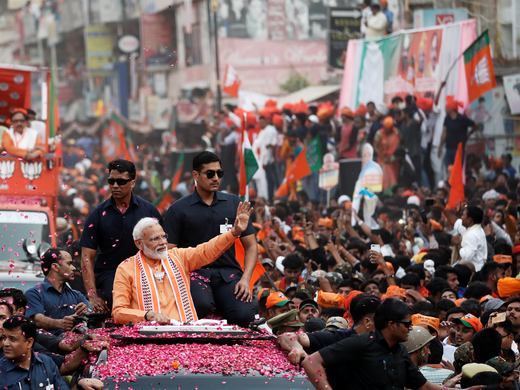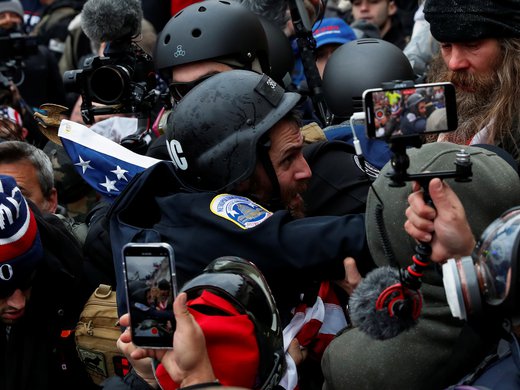The US House Select Committee hearings into the January 6, 2021, insurrection in Washington, DC, continue to make it very clear just how central deception, coercion and subterfuge were to the Trump administration’s political tool kit. Not only did the former US president constantly trade in falsehoods himself, he expected those around him to do the same. He effectively created an administrative information system reliant upon, and defined by, lies.
Really, this comes as no surprise. A great deal of research and journalism has revealed that disinformation — the purposeful spread of false information — was a pillar of Donald Trump’s political stratagem long before he began to erroneously contest the outcome of the 2020 US election. Nor is the problem unique to the United States: propaganda dependent on so-called “alternative facts” has also proved to be a hallmark of once-burgeoning democratic governments in Brazil, India, Mali, the Philippines and Turkey.
In Electoral Confusion, a new report commissioned by Protect Democracy, my colleagues Mark Kumleben, Katie Joseff and I argue that disinformation has become less of an ephemeral topic du jour and more of a structural problem in the United States. Similar research in other countries reveals a concerning parallel shift toward the institutionalization of falsehoods in democracies around the world.
At the same time, both my team’s research and others’ work reveal that communities of colour and other historically marginalized groups are often the targets of organized lying about elections and civic life. We found that minority groups across the battleground states of Arizona, Georgia and Wisconsin face a constant barrage of top-down false information about voting procedures, social issues and politics in general.
We define structural disinformation as “systemic issues related to the broader information environment, born out of long-term efforts to control minority groups’ access to and understandings of the country’s electoral and media systems.” In the United States, such efforts are inarguably related to Trump and his confederates’ efforts to undermine US democracy in order to hold on to power. Crucially, though, they are also deeply rooted in prior, historical, attempts to alter voting laws, electoral maps and — more broadly — public opinion, in such a way as to promote fiction over fact and confusion over clarity.
Much the same is true in other democracies that have fallen prey to politicians and political organizations that build their platforms on deception. Structural disinformation is a recipe for disaster for any country that depends on governance via the people, because, as the experts we interviewed for our study point out, it “creates a generalized atmosphere of distrust and disengagement.” That atmosphere, in turn, is tied to low voter turnout, a decrease in people’s trust in their country’s institutions and the alienation of critical swaths of the electorate.
As we reported in Electoral Confusion, in the United States there are several key problems at the centre of structural disinformation:
- Critical voting information — such as registration requirements, basic electoral processes and poll locations — is often unavailable, and the information that is available is sometimes deliberately false, misleading or incomplete.
- The lack of quality, accessible voting information and resources in languages other than English leaves immigrant and diaspora communities especially vulnerable to dis- and misinformation.
- When disinformation actors target communities of colour, they use both online and traditional media to spread falsehoods and sow uncertainty.
- Voters across all communities studied are demoralized by both general concerns about US politics and specific structural barriers to participation.
- Poll workers, voting rights organizations and individual voters of colour face vicious and dangerous disinformation-inspired harassment online and offline.
Compellingly, our research suggests that while social media and the internet are important vectors for disinformation, many political falsehoods actually spread offline in somewhat unexpected ways — via mailers, door-to-door campaigning and other means. As a researcher who specializes in the study of online propaganda, I’ve always felt that it is the offline, human, impacts of disinformation that result in the most acute problems for society and our ability to govern. For instance, how does disinformation affect people’s day to day life — their relationships and sense of well-being? How does it impact their experience of politics and the voting system? Of course, traditional broadcast media plays an interconnected role (alongside social, or “new,” media) in perpetuating our informational quandaries, and it also impacts people’s experience of the world. But the numbers suggest more and more people now get their news from social media.
What has been less obvious, however, is the extent to which on-the-ground and community-specific disinformation efforts via other means play out across the United States. I did not imagine, for instance, that official (and allegedly official) informational documents about changes to voting laws and practices — including those prepared by local, state and national governmental organizations — could or would regularly be vectors for purposefully spread false information. Nor did I know that roadside billboards were being used to spread untruths about who could vote — but in Wisconsin we heard about them being used by special interest groups to drive a disinformation campaign by falsely stating that people who had been convicted of felonies (even if they had served their time) could not vote.
As we state in our report, “Structural disinformation is a phenomenon of systemic neglect, where inequalities in access to resources such as civic education and local news lead directly to a disinformation-poisoned information ecosystem.” Given this, solutions have to focus on building more robust informational and educational systems. These solutions also have to be regionally, culturally and linguistically specific.
We presented four core means of fighting back against structural disinformation, although there are undoubtedly more (and more that are specific to various regions, countries and governance systems):
- Civic information outreach campaigns that work to spread voting information are crucial to developing trusted relationships and increasing civic participation.
- These outreach efforts are most effective when they take an integrated cross-platform approach designed to engage community members at a local level.
- Diaspora communities and communities that primarily speak languages other than English need tailored outreach that leverages existing grassroots networks.
- Messages advocating against harmful policies should take an empowering approach to avoid becoming “friendly fire” that might inadvertently discourage or mislead voters.
While the problem of disinformation has become entrenched in the political systems of many democracies, hope for a shift to facts and candour is far from lost. My colleagues and I found heartening evidence that a wide variety of people in the United States — from Indigenous groups in Arizona to the Black community in Georgia — are pushing back. By reinvesting in these communities, and in the civil society groups already working to help empower them socially and politically, we can begin to turn the tide on disinformation.



